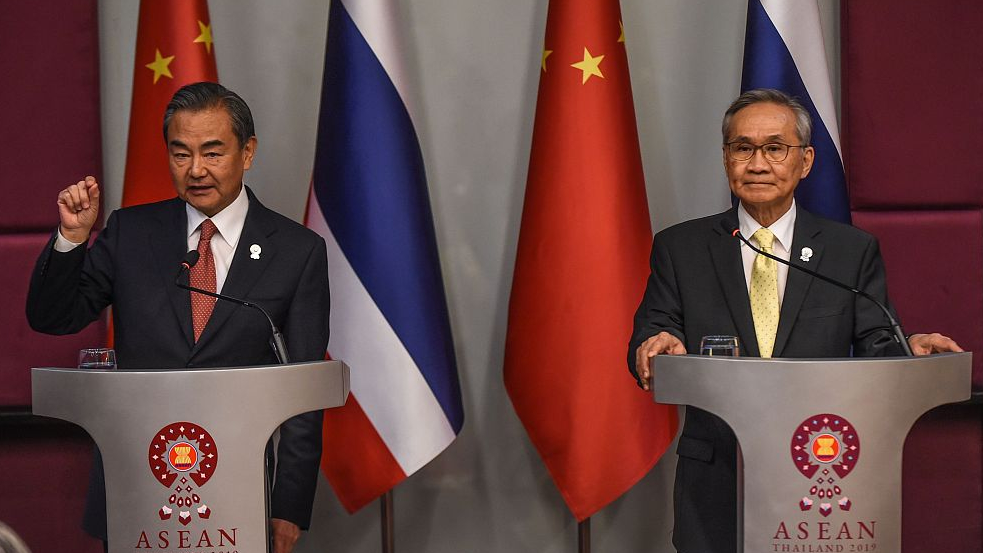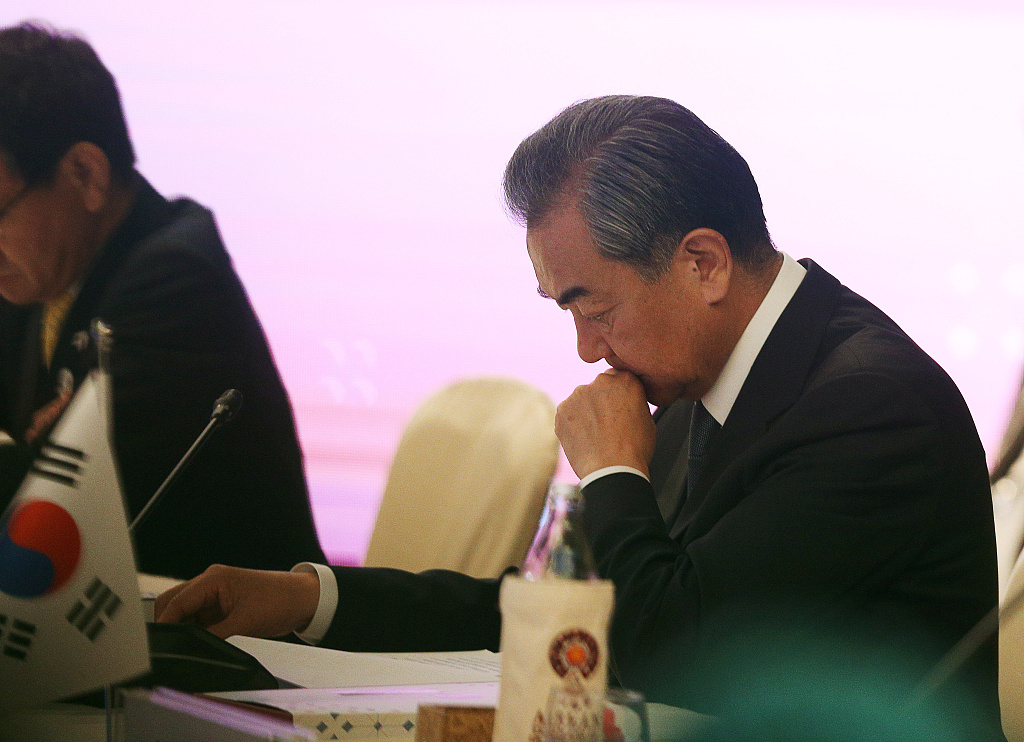

Editor's note: Tang Qifang is an associate research fellow at the China Institute of International Studies. The article reflects the author's opinions, and not necessarily the views of CGTN.
On July 31, Chinese State Councilor and Foreign Minister Wang Yi announced at the China-ASEAN Foreign Ministers' Meeting in Bangkok that China and ASEAN countries have finished the first round of reading of the single draft negotiating text of the Code of Conduct (COC) in the South China Sea ahead of schedule.
This marks a major step towards concluding the COC consultations and sends a positive signal to the outside world about the situation in the South China Sea.
This achievement has been widely welcomed by the international community. The joint communique released at the just-concluded ASEAN Foreign Ministers’ Meeting also affirmed this.
Some Western media have previously questioned the progress on the COC negotiations by saying that ASEAN countries have different views on the South China Sea issue, and such differences may have been "exploited" by China. Sadly, they have all ignored the positive development of the situation in the South China Sea over the past several years.
First of all, the attitudes of both China and ASEAN countries towards the negotiations are very positive. As Foreign Minister Wang Yi said when responding to a reporter's question during the meeting, China has always been the main enabler of the consultation process, taking a positive attitude towards the COC consultations from the very beginning.
In order to facilitate steady progress of the consultations, he put forward "four observations" and "three steps" in 2013 and 2017 respectively, to which ASEAN countries have responded positively.
These have accelerated COC consultations since the second half of 2016. For example, the framework of the COC was approved at the ASEAN Foreign Ministers' Meeting in August 2017, and in August 2018, China and ASEAN agreed on the single draft negotiating text of the COC. Subsequently, at the China-ASEAN Leaders' Meeting, Chinese Premier Li Keqiang put forward the goal of completing the consultations within the next three years' time.
In the meanwhile, as the COC consultations advance, mutual trust between China and ASEAN countries has been further strengthened.
In October 2018, China and ASEAN held their first joint maritime military exercises, which was also the first time that ASEAN conducted joint military exercises with another single nation and was thus an important milestone in their relations with China.

Chinese Foreign Minister Wang Yi attends the ASEAN Foreign Ministers' Meeting in Bangkok, Thailand August 2, 2019. /VCG Photo
Relations between China and the claimants in Southeast Asia have also been steadily advancing.
Chinese and Vietnamese leaders have made frequent mutual visits, and the two countries have been engaged in discussions on closer development strategy coordination and pragmatic cooperation under the framework of the Belt and Road Initiative. At the same time, the working mechanism of the waters outside the mouth of the Beibu Gulf is also serving both sides‘ interests.
China and the Philippines have achieved rapid improvement in bilateral relations within a short period of time, and decided to establish a comprehensive strategic cooperative relationship.
Under the strategic guidance of the leaders of the two countries, China and the Philippines are properly handling their differences through the consultation mechanism on the South China Sea issue, promoting pragmatic cooperation in less sensitive areas, and exploring the possibility of jointly developing oil and gas resources in the South China Sea. A memorandum of understanding on offshore oil and gas cooperation has been signed between the two countries.
Nonetheless, further consultations on the COC are also faced with some challenges.
First, we need to recognize that ASEAN countries do hold different views on the South China Sea issue, which is caused by their different interests and considerations on the matter and cannot be immediately solved.
However, one of the ASEAN’s most prominent advantages is its ability to reach the broadest agreement under the circumstances of different aspirations of its members and partner countries, and as long as this spirit is adhered to, the consultations are bound to reach an outcome acceptable to all parties.
Second, external forces are constantly disrupting the situation. The Trump administration has stepped up its efforts to carry out the so-called "freedom of navigation operations" in the South China Sea, frequently sending warships and aircraft close to the islands and reefs in the South China Sea.
Called upon by the United States, Japan, Australia and other U.S. allies have also continued to demonstrate their high-profile military presence in the South China Sea, bringing an adverse impact on the stability of the South China Sea.
Therefore, in order to achieve peace and prosperity in the South China Sea, both the parties concerned and the international community should see the overwhelmingly positive situation in the South China Sea and create favorable conditions for further consultations, rather than stirring up trouble.
In the meantime, China should actively speed up the COC consultation process, remain open to discussions on the binding nature of the COC, take into consideration the concerns of all parties, and work with other relevant parties to get rid of external interference.
(If you want to contribute and have specific expertise, contact us at opinions@cgtn.com)

Copyright © 2018 CGTN. Beijing ICP prepared NO.16065310-3
Copyright © 2018 CGTN. Beijing ICP prepared NO.16065310-3